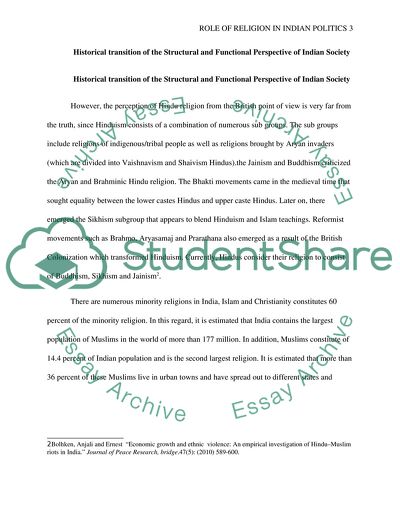Cite this document
(Role of Religion in Indian Politics Article Example | Topics and Well Written Essays - 4000 words, n.d.)
Role of Religion in Indian Politics Article Example | Topics and Well Written Essays - 4000 words. https://studentshare.org/religion-and-theology/1876826-role-of-religion-in-indian-politics
Role of Religion in Indian Politics Article Example | Topics and Well Written Essays - 4000 words. https://studentshare.org/religion-and-theology/1876826-role-of-religion-in-indian-politics
(Role of Religion in Indian Politics Article Example | Topics and Well Written Essays - 4000 Words)
Role of Religion in Indian Politics Article Example | Topics and Well Written Essays - 4000 Words. https://studentshare.org/religion-and-theology/1876826-role-of-religion-in-indian-politics.
Role of Religion in Indian Politics Article Example | Topics and Well Written Essays - 4000 Words. https://studentshare.org/religion-and-theology/1876826-role-of-religion-in-indian-politics.
“Role of Religion in Indian Politics Article Example | Topics and Well Written Essays - 4000 Words”. https://studentshare.org/religion-and-theology/1876826-role-of-religion-in-indian-politics.


